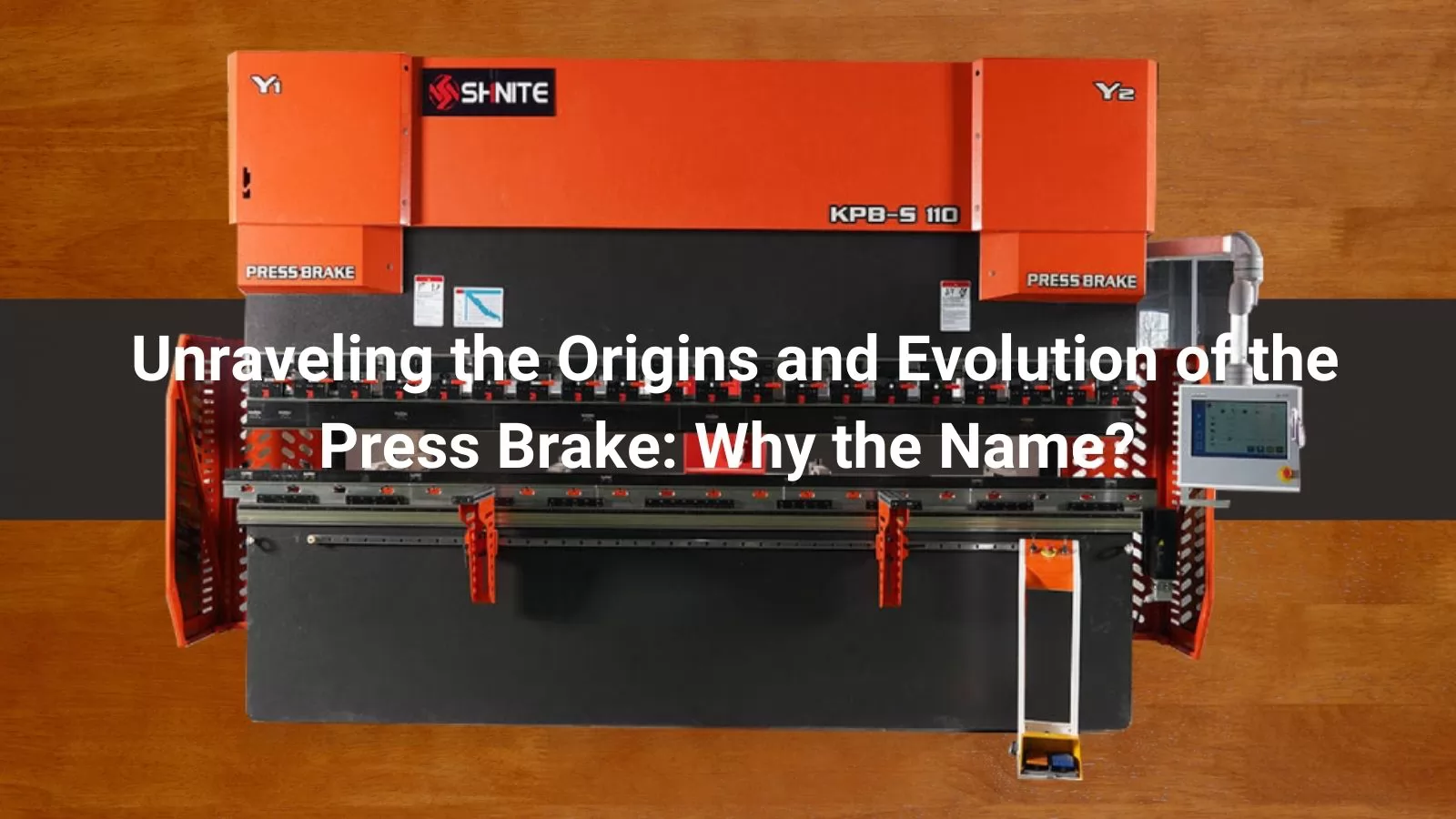





The term press brake is synonymous with precision sheet metal fabrication, but have you ever wondered why it’s called a press brake and not a sheet metal bender, metal former, or another descriptive name? This article dives deep into the history, etymology, and technological evolution of the press brake, exploring the roots of its name and its critical role in modern manufacturing. Join us as we uncover the fascinating story behind this indispensable machine and highlight why Shinite remains a top choice for press brake solutions.
Before the advent of mechanized tools, shaping sheet metal was a labor-intensive, artisanal process. Craftsmen relied on manual techniques, securing sheet metal to a mold or model and using tools like hammers, stakes, and spoons to form it. This hands-on approach, still seen in autobody repair and bespoke art fabrication, laid the groundwork for the development of specialized machines.
The need for faster, more consistent methods drove innovation, leading to the creation of early bending machines. These advancements set the stage for the press brake, a machine that would revolutionize sheet metal fabrication.
In 1882, the first machine resembling a modern press brake was patented, known as the cornice brake. This manually operated device featured a clamping leaf that held the sheet metal in place, allowing it to be bent along a straight line with precision. The cornice brake was a significant leap forward, enabling more efficient and repeatable bending compared to manual methods.
Over time, the cornice brake evolved into various forms, including leaf brakes, box and pan brakes, and folding machines. These machines shared a common goal: to bend sheet metal accurately and efficiently. However, the press brake as we know it today would emerge with further technological advancements.
By the early 20th century, powered press brakes began to appear, marking a new era in sheet metal fabrication. The first iterations were flywheel-driven press brakes, which used mechanical energy to drive the bending process. These were followed by hydromechanical, hydraulic, and eventually electric press brakes, each offering greater precision, power, and versatility.
Today, modern press brakes are equipped with advanced features like CNC (Computer Numerical Control) systems, laser-guided alignment, and programmable backgauges, making them capable of producing complex bends with unparalleled accuracy. Despite these advancements, the term press brake has remained consistent. To understand why, we must explore the etymology of the name.
The name press brake is a combination of two words with deep historical and linguistic roots. Let’s break it down:
The word brake traces its origins to archaic terms in Old English, Middle English, Dutch, German, and Gothic languages. In the 15th century, brake referred to an instrument used for crushing or pounding, such as those used to process grain or plant fibers. Over time, brake became synonymous with a machine that applies force to manipulate materials.
In the context of sheet metal fabrication, the term brake evolved from the Middle English verb breken, meaning to bend, change direction, or deflect. This aligns perfectly with the function of a press brake, which bends sheet metal into precise angles. Interestingly, the verb break (to violently divide or shatter) shares a linguistic connection with brake, as the past participle of brake was once broken. This etymological link highlights the dual nature of bending and breaking in metalworking.
The term press originates from Old French, where presse meant to crush or crowd. By the late 14th century, press referred to a device for pressing clothes or extracting juice from fruits. Over time, it came to describe any machine that applies force by squeezing or compressing. In a press brake, the punches and dies exert controlled force on sheet metal, causing it to bend into the desired shape.
Together, press brake describes a machine that applies force (press) to bend or shape (brake) sheet metal. The term encapsulates the machine’s core function: using controlled pressure to deform metal without breaking it. As technology advanced, descriptors like mechanical, hydraulic, electric, and CNC were added to differentiate types of press brakes, but the core name has endured.
While terms like sheet metal bender or metal former might seem more descriptive, they lack the historical and technical specificity of press brake. These alternative names are too broad, encompassing a range of tools and machines (e.g., rollers, folders, or manual benders) that may not involve the precise, force-driven bending process of a press brake. The term press brake has become industry-standard because it accurately reflects the machine’s mechanics and historical evolution.
Additionally, press brake carries a legacy tied to the early cornice brake and the linguistic roots of press and brake. This historical continuity has cemented its place in the lexicon of sheet metal fabrication.
Today, press brakes are essential tools in industries ranging from automotive and aerospace to construction and electronics. Their ability to produce precise bends in sheet metal makes them indispensable for manufacturing components like enclosures, brackets, panels, and structural parts.
Modern press brakes come in various configurations, including:
These machines are designed to handle a wide range of materials, from thin aluminum to thick stainless steel, and can produce intricate bends with tolerances as tight as a few thousandths of an inch.
When it comes to press brakes and sheet metal fabrication equipment, Shinite stands out as a global leader. With a reputation for quality, reliability, and competitive pricing, Shinite offers a comprehensive range of press brakes tailored to meet the needs of manufacturers worldwide.
Whether you’re a small fabrication shop or a large-scale manufacturer, Shinite has the expertise and equipment to elevate your sheet metal fabrication capabilities. Visit Shinite.com to explore their full range of press brakes and request an instant quote today.
The press brake is more than just a machine—it’s a testament to centuries of innovation in sheet metal fabrication. From its origins in the cornice brake to its modern incarnations, the press brake has transformed how we shape metal, enabling precision and efficiency across countless industries. The name press brake, rooted in the etymology of press (to apply force) and brake (to bend), perfectly captures its function and historical significance.
As we continue to push the boundaries of manufacturing, the press brake remains a cornerstone of progress. If you have insights, historical tidbits, or questions about press brakes or other sheet metal fabrication tools, we’d love to hear from you! Contact Shinite at info@shinite@shiniteblade.com to share your thoughts or explore their industry-leading press brake solutions.





Fastest
Installation

Top-Notch
Equipment

24/7 Customer
Support

100% Secured
Payment
